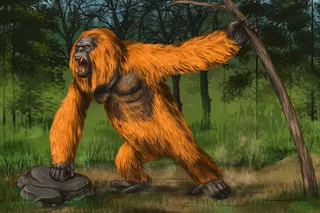Take one look at a fossilized Archaeopteryx, and you’re bound to be confused. While its sharp teeth, long snout and lengthy tail look like those of a dinosaur, its feathered wings are reminiscent of a bird. The mix of traits is so strange that even paleontologists have struggled to classify the creature.
Having been described as both a birdish dinosaur and a dinosaur-like bird, Archaeopteryx, whose name translates to “old wing,” is best understood as one of many transitional forms that bridged the evolutionary divide between dinos and birds. And while Archaeopteryx wasn't alone in linking the two lineages, the bizarre beast will be forever famous for revealing the relationship between the dinosaurs and their modern-day descendants.
(Credit: Natalia Van D/Shutterstock)
Natalia Van D/Shutterstock
Ask any paleontologist about avian origins, and they’ll tell you that today’s birds trace their ancestry to the dinosaurs and represent the only surviving segment of ...















